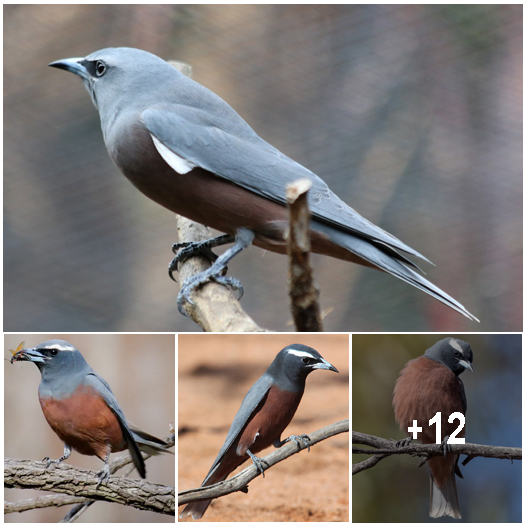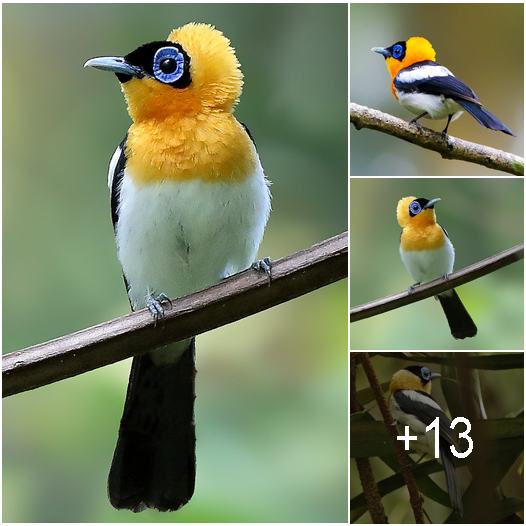A striking bird with his flamboyant pointed orange crest, iridescent light green belly, and white banded rump!
Meet the Rufous-crested Coquette
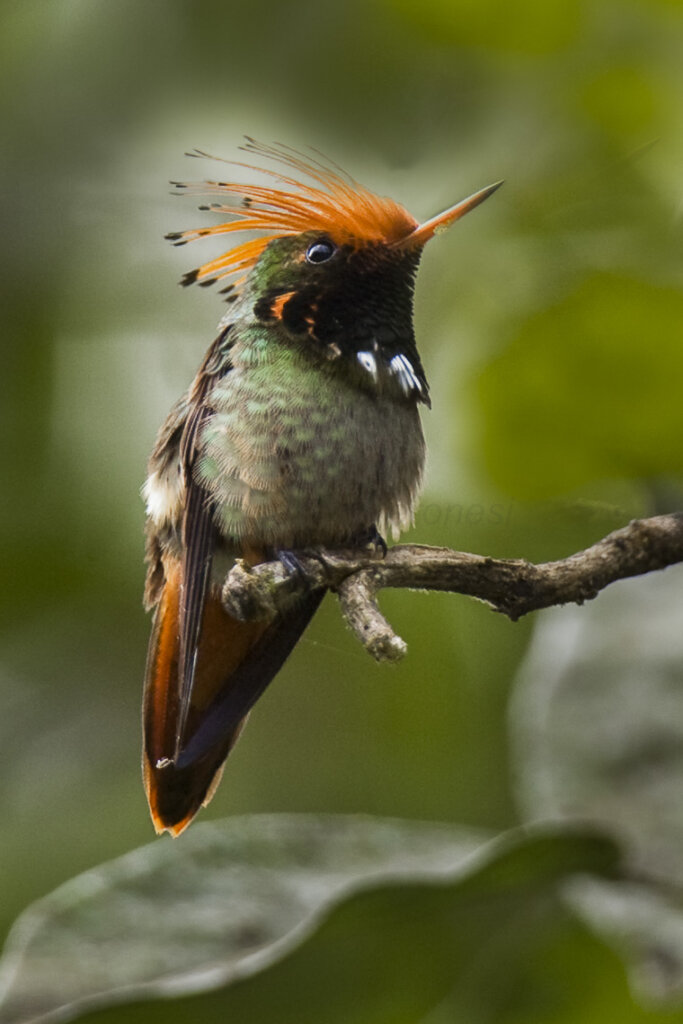
Photo Courtesy of Francesco Veronesi / CC BY-SA 2.0
The rufous-crested coquette (Lophornis delattrei), is a species of hummingbird native to the tropical slopes of pacific South America. The adult male has a crest of orange feathers tipped with black, extending from a head covered in rufous plumage. A band of white feathers crosses his rump, with brown, orange, and green tail feathers extending posteriorly from it. His belly and back are covered in a light iridescent green. His throat is a darker green with feathers that end posteriorly in small pointed white feathers. A vertical band of rufous feathers frames his green throat and tail feathers which end in a double-rounded shape.
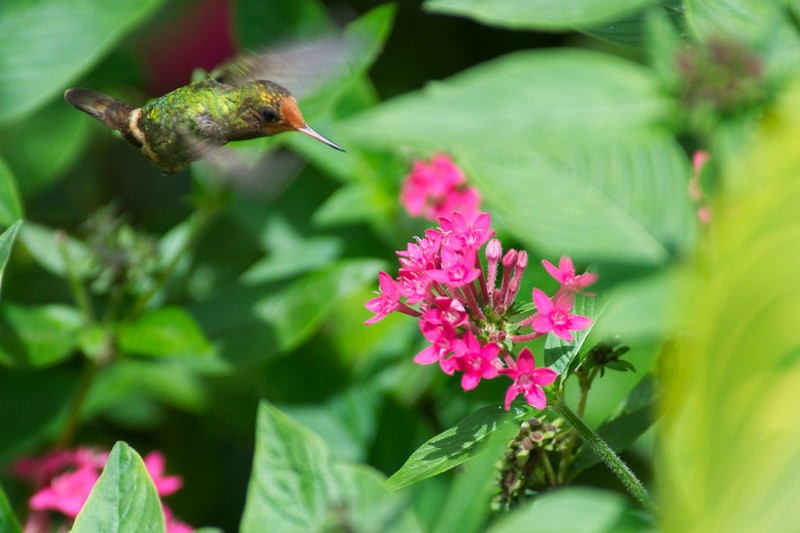
Photo Courtesy of Bettina Arrigoni/CC BY 2.0
Not quite as conspicuous as the male, the female has a rusty forehead and throat, lacking the green throat and orange crest he has.
She also has a broad white cheek stripe separated by a dusky green center to the throat and dusky brown below.

Photo Courtesy of Panegyrics of Granovetter/CC BY-SA 2.0
Rufous-crested coquettes inhabit the Pacific and Caribbean mountainsides of Peru, Bolivia, Colombia, Ecuador, Panama, and Costa Rica, with at least one sighting in western Brazil.
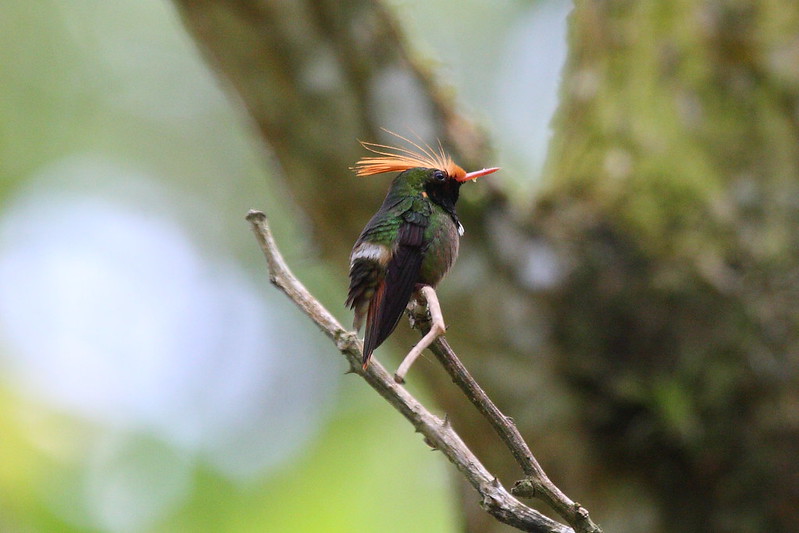
Photo Courtesy of Dominic Sherony/CC BY-SA 2.0
In their range, these birds like to inhabit subtropical or tropical lowland and montane forests at altitudes of 500m – 1,900m above sea level.
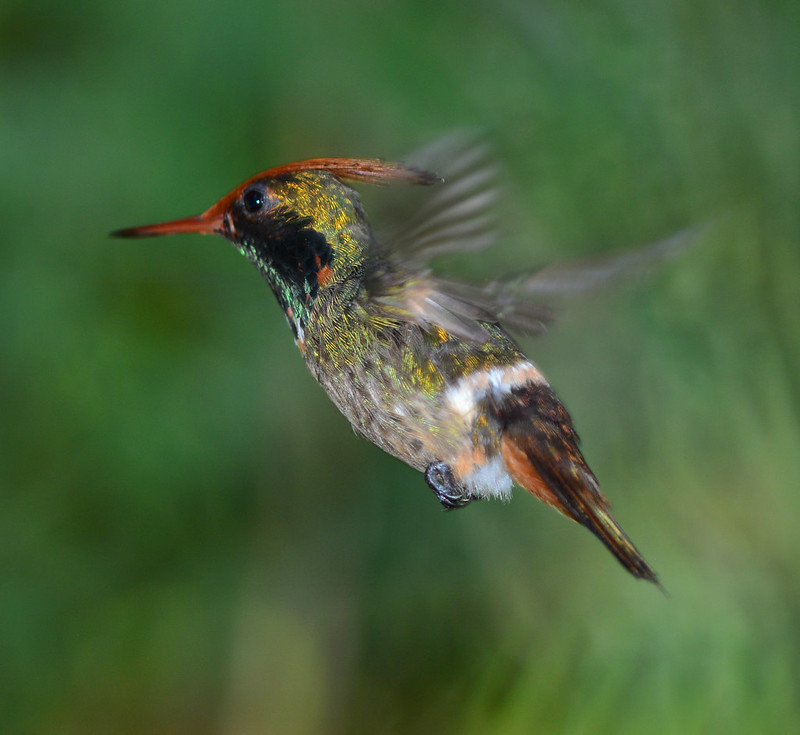
Photo Courtesy of Panegyrics of Granovetter/CC BY-SA 2.0
Rufous-crested Coquettes primarily feed on nectar taken from a wide variety of brightly colored, scented small flowers on trees, herbs, shrubs, and epiphytes. Favoring flowers with high sugar content these birds aggressively protect those areas containing high-energy nectar. They use their long, extendible, straw-like tongues to retrieve the nectar while hovering with their tails cocked upward. They have also been known to sometimes dine on insects and spiders.

During the breeding season, which is pretty much all your round, a cup-shaped nest is built by the female out of plant fibers woven together and green moss. It is usually built in a bush, shrub, or small tree. She lines it with soft plant fibers, animal air, and feather-down. She lays one white egg within, then feeds her chicks regurgitated insects once they have hatched. After about 20 days the chicks are fully-fledged. Pretty much the only part of the breeding process the male is involved in is the act of mating itself.
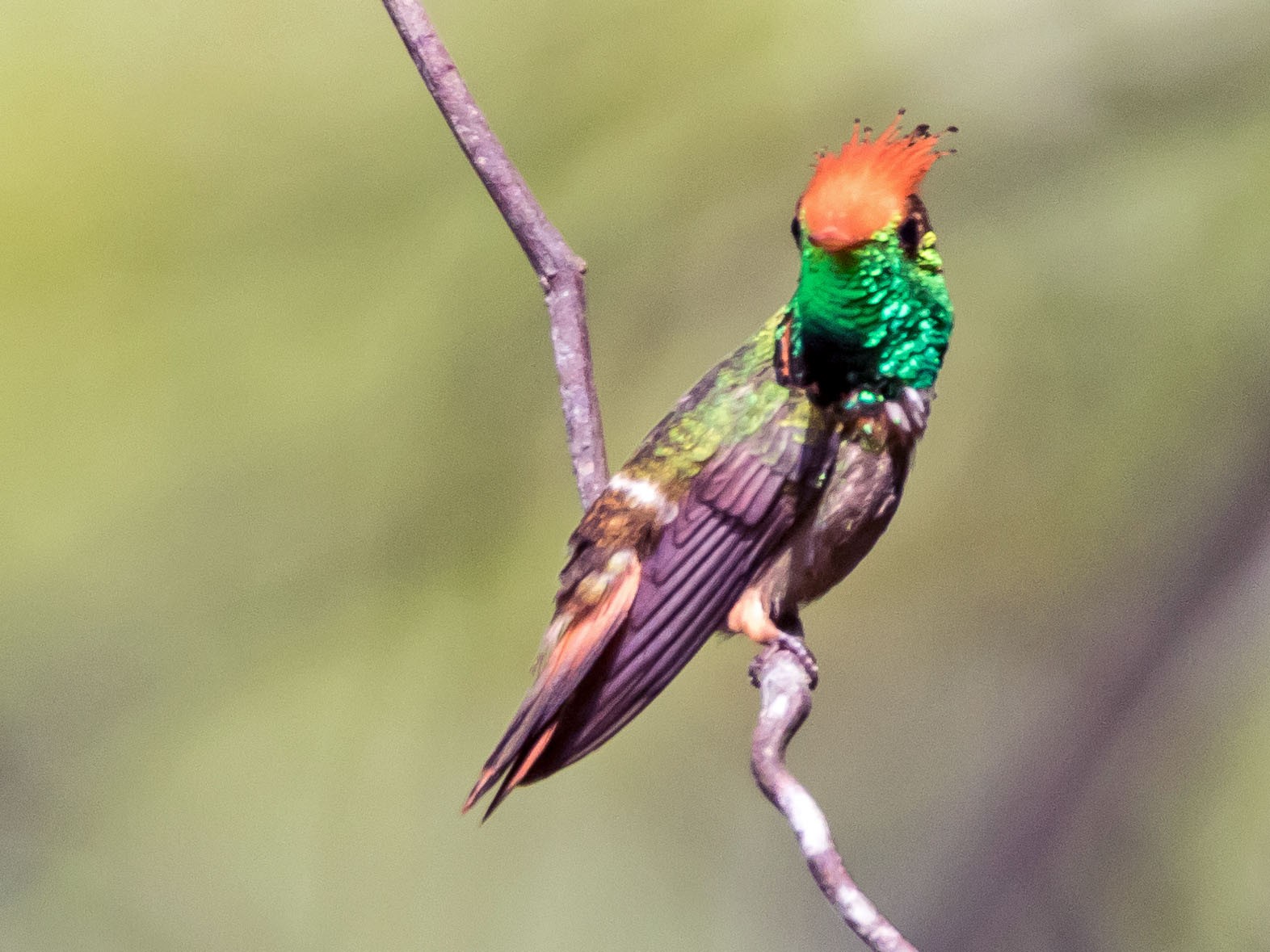
Though rare the Rufous-crested coquette’s population appears to be stable. Thus the IUCN red list ranks this species as at least concern.
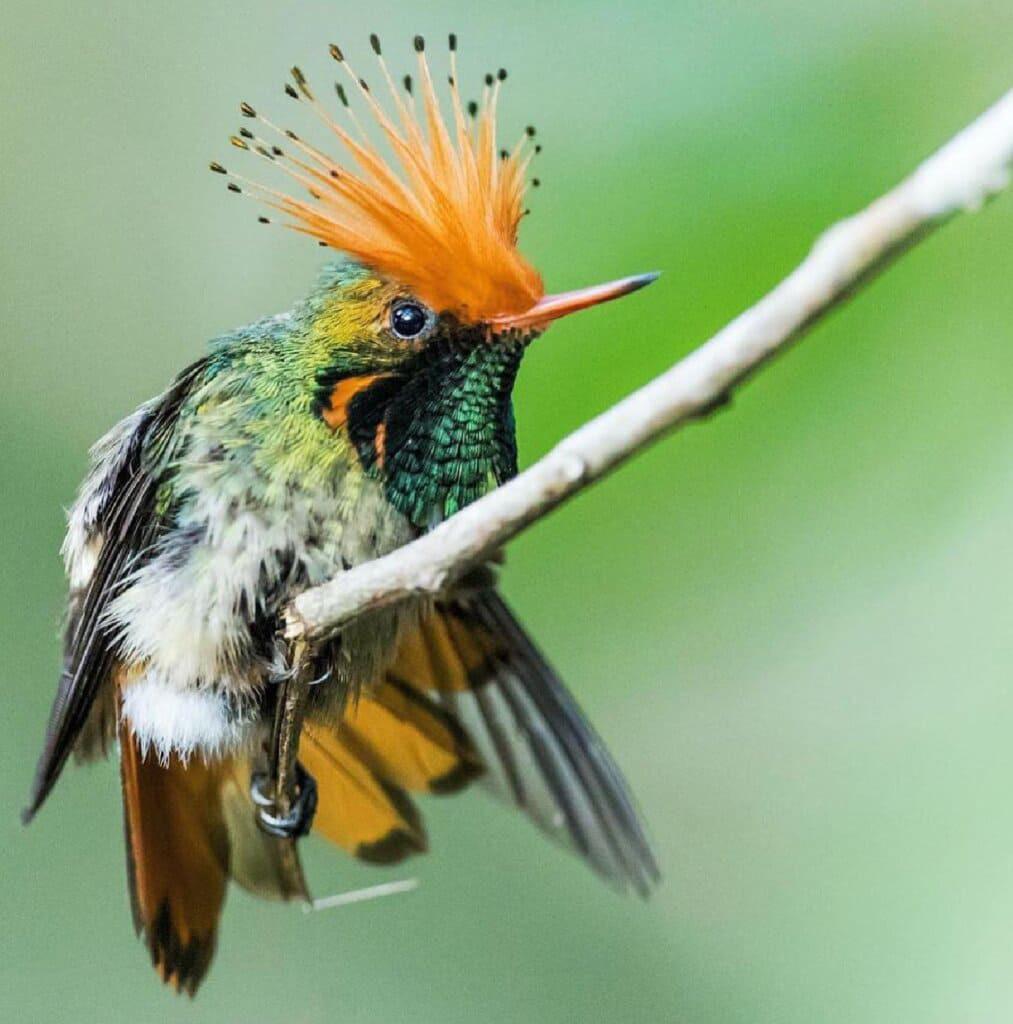
Watch this bird right here in the video below:
H/T Wikipedia – Creative Commons Attribution-ShareAlike License.
